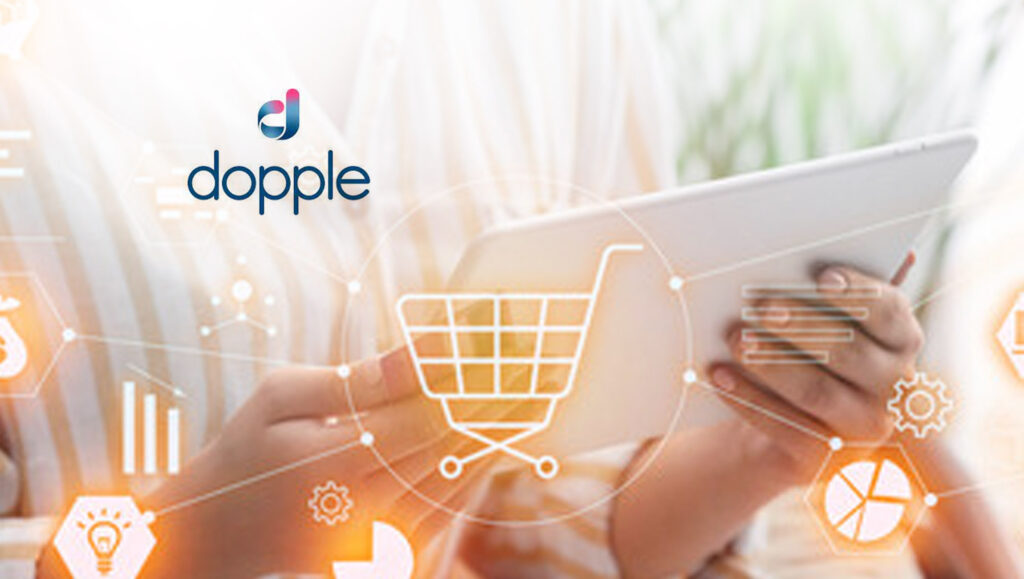XR Experts at Dopple Predict Big Opportunities in Commerce
The retail landscape looks vastly different than it did five years ago. Ease of access and the infinite shelf mentality of ecommerce has accustomed shoppers to being able to discover, select, and quickly obtain most any product or service they need at the click of the button. The ubiquity of the smartphone (access to choice), the globalization of supply (abundance of choice), and the digitization of delivery (expedited convenience) has built a superior buying mechanism. By 2025 e-commerce is expected to account for nearly 25% of total global retails sales, compared to 2016 when it was just over 7%. Across verticals, buyers are no longer limited by what is on the store shelf, and their expectations of brands and product availability have grown in accordance with technology. Consumers have become more comfortable with shopping online, and have demonstrated a great willingness to exchange the ability to physically touch a product prior to purchase for the convenience of having it delivered to their door, particularly in the case where free returns and exchanges are points of parity between brands.
It is not only the growth of ecommerce that has shifted consumer behavior, the immense amount of information available has shaped how consumers shop in-store, with 81% researching brands online prior to a purchase, and 59% actively reaching for product information or pricing while in a store. Consumers have been granted access to the infinite product shelf, which in turn has driven a greater desire for finding exactly what they are looking for.
In response, retailers and brands are being challenged to evolve at a rapidly accelerating pace, placing priority on the areas that promise the greater return from today’s demanding consumer.
Read More: SalesTechStar Interview with Troy Townsend, CEO and Co-Founder at Zitcha
Omnichannel
Omnichannel has become a popular buzzword among marketers, but it is not without reason that this is a hot topic among brands. As noted by Shopify President, Harley Finklestein, omnichannel is how buyers expect to be able to interact with a brand.
“Omnichannel retailing isn’t a strategy, it’s table-stakes. The consumer shopping journey will remain a hybrid between online and offline.”
Consumers will gravitate towards the brands that provide the best experience with the greatest level of convenience to them, but what is convenient is not always the same channel.
Brands who have found the greatest success in this changing market are those that have adopted an omnichannel approach, going further than just being available through several channels, but ensuring that the experience with each channel delivers the same level of value and brand equity across the board. While many DTC’s have achieved their primary success online, we are seeing more and more an adoption of store-in-store concepts, pop ups, and partnerships that allow consumers to pick and choose how they will interact with brands.
The fundamental change is that the brand.com now serves as the core of the experience as platforms, marketplaces, retail and store fronts serve as supporting infrastructure layers to distribution. Particularly as physical retail sees upticks in traffic, we see consumers who are interested in purchasing different brands or purchasing their favorites through new channels. Though physical retail will continue to be an important consumer touchpoint, the percentage of sales influenced by digital is rapidly expanding. Research from Forrester anticipates 70% of retail sales to be digitally influenced in the coming years.
With the inherent competition with brands, consumers are now pursued by brands as content makers. Consumers feel that good content will find the user where they are and where they want to be. Brands have built great technology to accomplish this. When you are thinking about some product and it magically appears in front of one of your screens, that is increasingly less of a coincidence.
Personalization
Consumers are looking for a personalized experience, but not at the cost of their privacy. Balancing these two needs is an ongoing challenge for brands, but one that promises to pay dividends if mastered. Two methods of creating these personalized experiences are leveraging first party data, which buyers have provided, and designing an experience that feels personalized without needing to tap into buyer information.
The first method has been widely discussed and pursued as brands heed the warnings of a cookieless future. By encouraging users to opt in, brands are able to build personalized experiences based on how the user interacts with the brand. 57% of consumers are willing to share personal information for a better experience, with personalized experiences driving 48% higher sales values.
Less recognized but notably effective is creating the feel of a personalized experience by empowering consumers to drive their own experiences. Immersive technologies such as 3D configuration, augmented reality, and virtual reality put the power in the buyers’ hands to determine how they experience and explore a brand.
Visual Commerce
Consumers are looking for more information as they shop, and 90% of the information processed by the human brain is visual. Shoppers want confirmation that the product will look like the picture. Most consumers are unaware that many of the product “pictures” that they see online are actually 3D models. Now brands are taking that application a step further to allow shoppers to interact and evaluate a product in an immersive environment.
AR has been the darling of the gaming world for a number of years, but we are seeing more brands bring this technology into the shopping experience. Virtual try on, in home design, and car shopping are a few of the ways that AR has enabled a more immersive shopping experience that consumers are excited about.
The addition of AR to the shopping world has seen benefits for both consumers and brands. 66% of consumers surveyed by The Harris Poll indicated that they would feel more confident in purchasing a product if they could experience it in 3D or AR, while a study from Shopify found that products enabled with AR saw 94% higher conversions than those without. In many ways the brand content is pursuing the user, reaching past the confines of 2 dimensions into 3 dimensions. In the case of augmented reality, it is jumping out of the screen to be in your space on demand.
In tandem with AR, 3D visualization and configuration are seeing exponential growth as brands recognize the opportunity to improve experiences, increase conversions, and reduce costs. For consumers, 3D product experiences provide an immersive product touchpoint that offers greater visibility into the form and functionality of a product prior to purchase. Where traditional photography and video offer shoppers a finite number of product views, 3D allows for 360°inspection and the ability to view the product in the desired material, color, or set up they have chosen. Research shows that 82% of shoppers activate a 3D option when available.
Read More: Implications of Revenue Miss and How to Avoid It
Focus on experience
For many product categories there is a great deal of parity among products and product features. Where brands can stand out is in making the experience of purchase and ownership a unique and valuable one. Whether that is a specialized delivery program or the experience of customizing or configuring the product, do it better than the competition. Competitive advantages are generated not only the value of the product, but also how a buyer experiences the product. In fact, research from Adobe shows that brands focusing on customer experience drive 2x the average order value.
Put your data to work
Google may be putting a damper on advertising data, but your customers provide you with incredibly valuable insights that show how they want to shop and what they want to buy. Go beyond the established KPIs for sales and channel metrics to see how your customers are finding you, how they choose to shop, when they choose to shop, and where there are opportunities to improve your touch points with them.
Don’t hesitate on technology
Technology has become a central part of commerce, and in the past many of the largest innovations were prohibitively expensive to implement. With today’s rate of growth and innovation, the latest technologies are more readily available and affordable than many tend to believe. If there is a technology that would aid in your business or improve your customers’ experience, there is most likely a partner out there who is doing it at a scale or price that you can work with. Don’t wait and give your competitors the edge.
Getting Started with 3D & Augmented Reality
Dopple provides brands with an intuitive, low code platform to seamlessly integrate 3D and augmented reality into any marketing stack. Products come to life with digital twins that capture the attention and confidence of buyers by allowing them to shop in an immersive setting. Find out more about how 3D can elevate your brand experience by connecting with our visual experts.






















